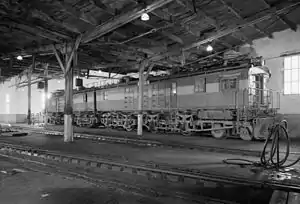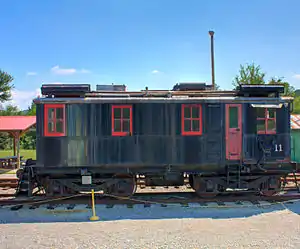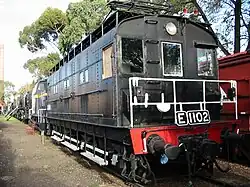


A boxcab, in railroad terminology, is a North American term for a locomotive in which the machinery and crew areas were enclosed in a box-like superstructure. Deriving from "boxcar", the term mainly occurs in North America. It was also applied to Victorian Railways "E" class second series electric locomotives.
Boxcabs were either diesel-electric or electric locomotives. Most North American boxcabs were built a few years before and after 1930, the most prominent builders being GE and Alco.
Design
Boxcabs did not have heavily styled ends or a superstructure consisting of multiple structures, although the prototype diesel/oil-electric, GE no. 8835, had one end prominently rounded – attributed to its trolley (tram) car ancestry – and the second and following 100-ton ALCO boxcabs had semi-cylindrical ends.
See also
References